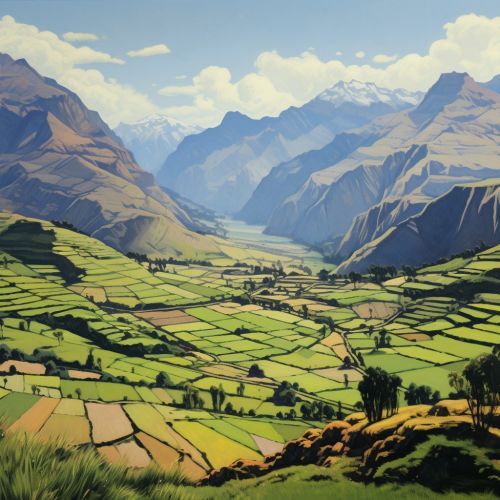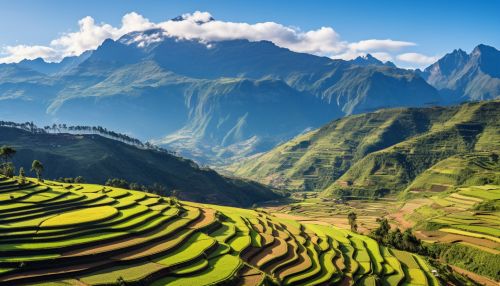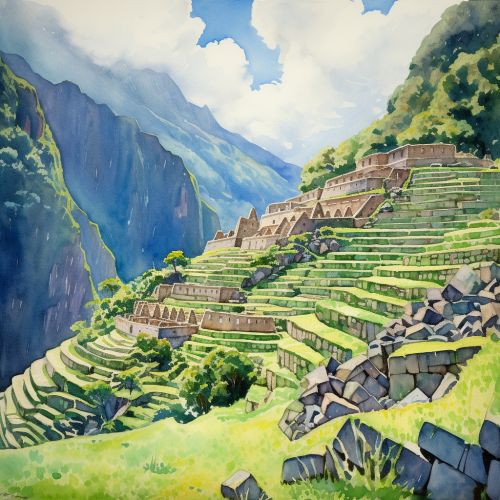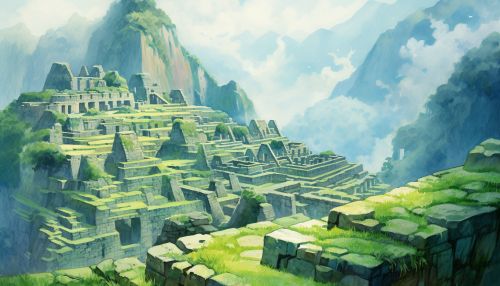Andean civilizations
Pre-Inca Civilizations
The Andean civilizations were a patchwork of distinct cultures and societies that developed over the millennia in the rugged landscape of the Andes Mountains. This article will delve into the intricacies of these civilizations, shedding light on their unique cultural, political, and economic systems.


The Andean region, stretching from modern-day Colombia to northern Argentina and Chile, was home to a multitude of civilizations, including the Chavín, Moche, Nazca, Wari, and Tiwanaku cultures. These cultures were characterized by their advanced knowledge of agriculture, metallurgy, and architecture, as well as their complex social hierarchies and religious practices.
Chavín Culture
The Chavín culture, which emerged around 900 BCE in the northern highlands of Peru, is often considered the first major civilization in the Andean region. The Chavín are best known for their monumental architecture, particularly the Chavín de Huántar temple complex, and their distinctive art style, which featured intricate carvings and ceramics depicting a variety of human, animal, and mythical figures.
Moche Civilization
The Moche civilization, which flourished from 100 to 700 CE along the northern coast of Peru, was notable for its sophisticated pottery, metalwork, and irrigation systems. The Moche were also known for their complex political structure, which was characterized by a system of regional polities, each governed by a warrior-priest.
Nazca Culture
The Nazca culture, which thrived from 100 BCE to 800 CE in the southern coast of Peru, is perhaps best known for the Nazca Lines, a series of large geoglyphs etched into the desert floor. The Nazca were also skilled potters and weavers, and they developed an extensive system of underground aqueducts, known as puquios, to irrigate their arid lands.
Wari and Tiwanaku Empires
The Wari (600-1000 CE) and Tiwanaku (300-1000 CE) empires were two of the most powerful and influential civilizations in the Andean region during the Middle Horizon period. Both empires were characterized by their urban planning, with the Wari capital of Wari and the Tiwanaku capital of Tiwanaku serving as important administrative and religious centers.
Inca Civilization
The Inca Empire, which emerged in the 13th century CE and lasted until the Spanish conquest in the 16th century, was the largest and most powerful civilization in pre-Columbian South America. The Inca Empire was characterized by its highly centralized political system, advanced agricultural techniques, and monumental architecture, including the famous city of Machu Picchu.


Political Structure
The Inca Empire was a theocratic, autocratic state ruled by a Sapa Inca, or divine emperor. The empire was divided into four provinces, each governed by a provincial governor, and further subdivided into districts and communities. The Inca political system was highly bureaucratic, with a complex system of record-keeping using quipu, a system of knotted strings.
Economy and Agriculture
The Inca economy was based on a form of state socialism, with the state controlling all land and resources and redistributing goods and labor as needed. Agriculture was the foundation of the Inca economy, with the Incas developing sophisticated terracing and irrigation systems to cultivate a variety of crops, including potatoes, maize, and quinoa.
Religion and Cosmology
Inca religion was polytheistic, with a pantheon of gods headed by Inti, the sun god. The Incas also practiced ancestor worship and believed in a complex cosmology that divided the world into three realms: the celestial realm, the earthly realm, and the underworld.
Spanish Conquest and Aftermath
The Spanish conquest of the Inca Empire in the 16th century marked the end of the Andean civilizations. The conquest, led by Francisco Pizarro, was characterized by violence, disease, and cultural destruction. However, many aspects of Andean culture, including language, agricultural practices, and religious beliefs, have survived and continue to influence contemporary Andean societies.
